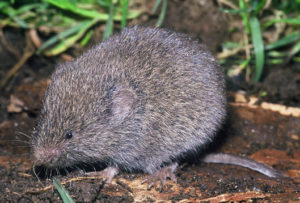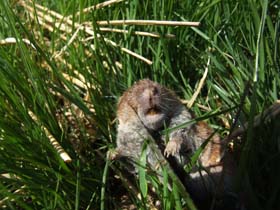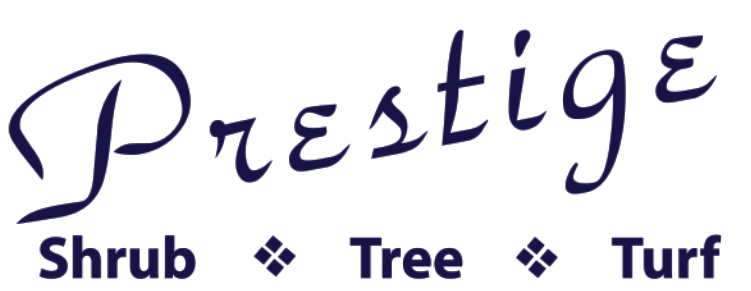 Voles can cause severe root damage through their feeding activities on various shrubs and trees. They prefer fleshier roots but will feed upon quite a few different plant species. Nandina, hosta and camellia are especially susceptible.
Voles can cause severe root damage through their feeding activities on various shrubs and trees. They prefer fleshier roots but will feed upon quite a few different plant species. Nandina, hosta and camellia are especially susceptible.
Since voles will commonly use burrows with many exit holes, activity can be mistaken for chipmunks or moles. Voles can create, and will often times utilize, old abandoned mole tunnels thus confusing the land owner into thinking that moles are active. They will readily thrive on small plants. Like shrews they will eat dead animals and, like mice and rats, they can live on most any nut or fruit. Additionally, voles will target plants more than most other small animals. It is here where their presence is mostly evident. Voles will readily girdle small trees and ground cover much like a porcupine. This girdling can easily kill young plants and is obviously not healthy for trees or other shrubs.
 Voles love to eat succulent root systems and will burrow under plants or ground cover eating away until the plant is dead. Bulbs in the ground are another favorite target for voles. Their excellent burrowing and tunneling ability gives them access to sensitive areas without clear or early warning. A vole problem is often only identifiable after they have destroyed a number of plants. Unfortunately voles are very difficult to control. Poisons do not work well and there can be non-target effects from using poisons. The best bet is to use live traps to capture and remove the voles from the area.
Voles love to eat succulent root systems and will burrow under plants or ground cover eating away until the plant is dead. Bulbs in the ground are another favorite target for voles. Their excellent burrowing and tunneling ability gives them access to sensitive areas without clear or early warning. A vole problem is often only identifiable after they have destroyed a number of plants. Unfortunately voles are very difficult to control. Poisons do not work well and there can be non-target effects from using poisons. The best bet is to use live traps to capture and remove the voles from the area.
